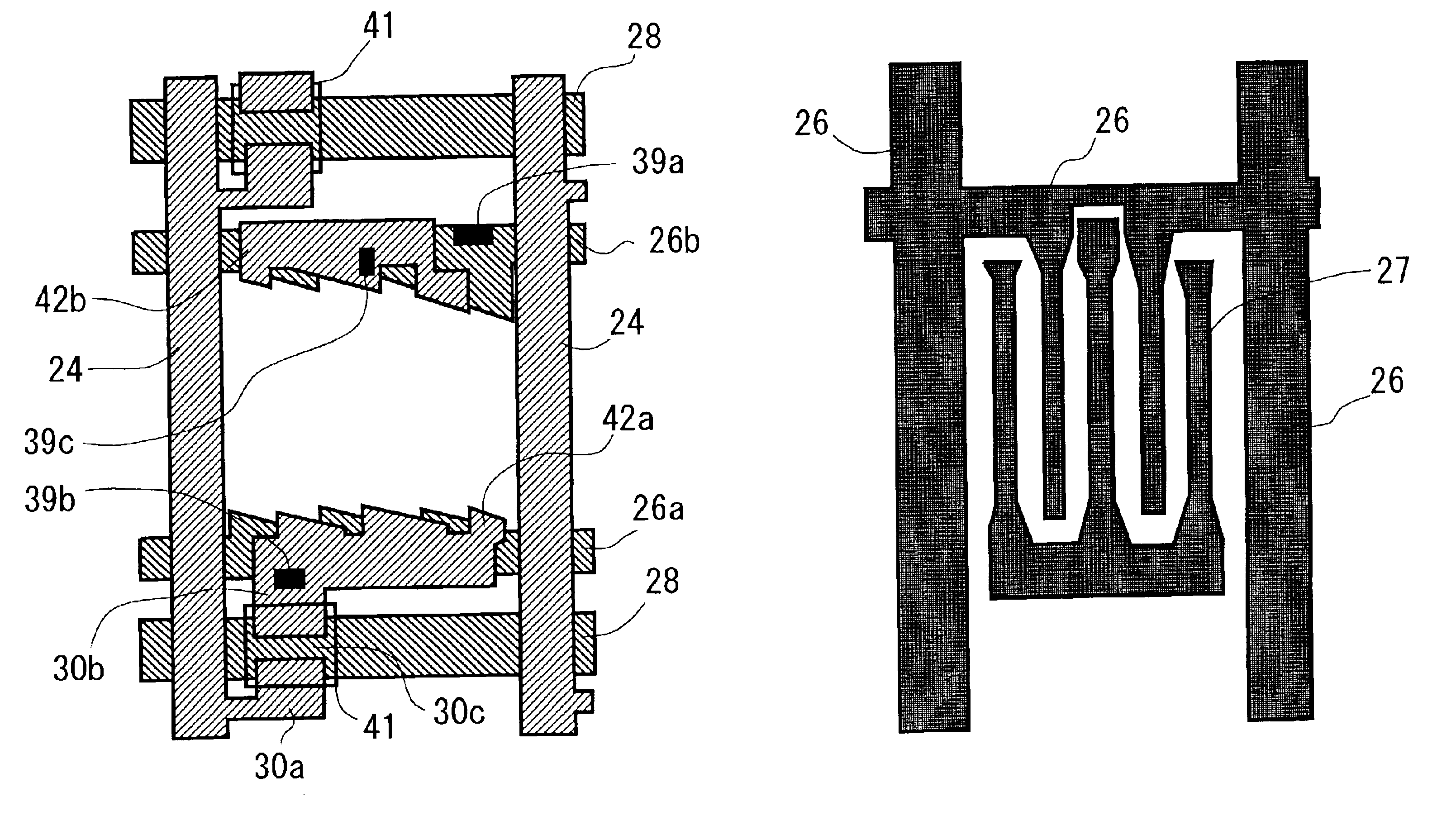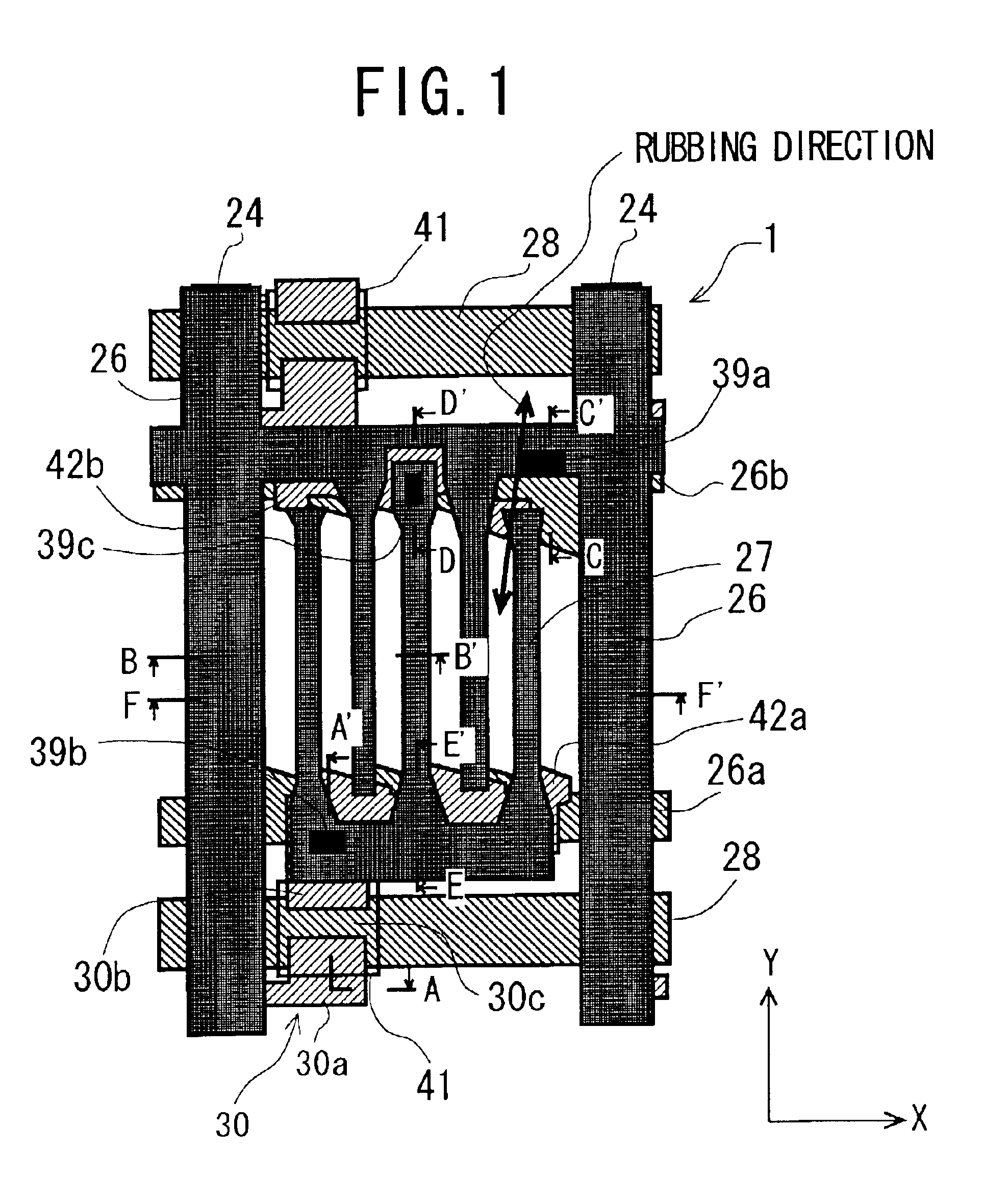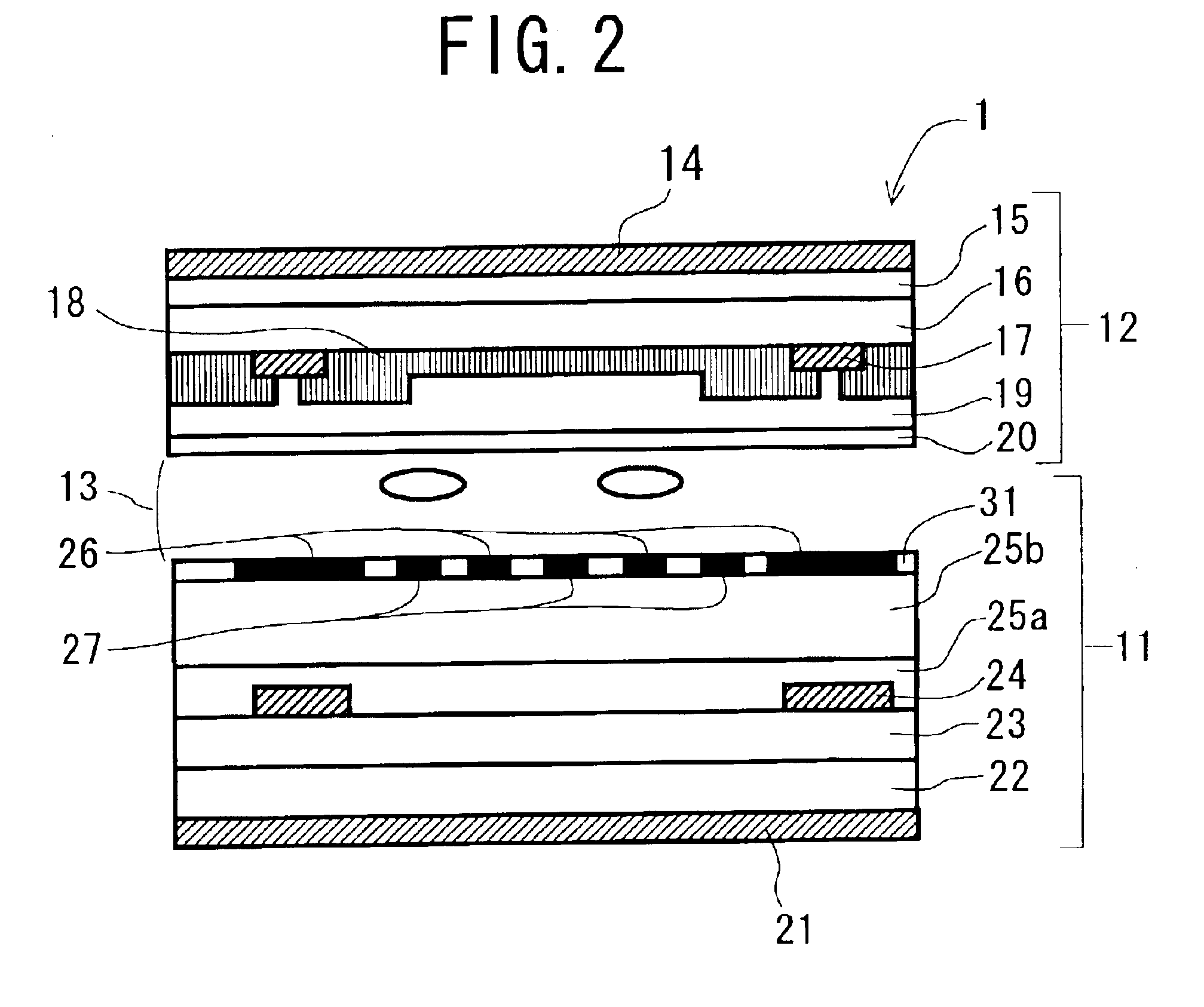Active-matrix addressing liquid-crystal display device using lateral electric field and having two storage capacitors
a technology of active matrix and lateral electric field, which is applied in the direction of identification means, instruments, optics, etc., can solve the problems of low aperture ratio, reduced transmittance, and high probability of delay of corresponding gate line signal, and achieve higher transmittance and fabrication yield
- Summary
- Abstract
- Description
- Claims
- Application Information
AI Technical Summary
Benefits of technology
Problems solved by technology
Method used
Image
Examples
first embodiment
An IPS mode active-matrix addressing LCD device 1 according to a first embodiment of the invention has the structure as shown in FIGS. 1, 2, 3A, 3B and 4.
As clearly seen from FIG. 2, the LCD device 1 according to the first embodiment comprises a rectangular active element substrate 11, a rectangular opposite substrate 12 coupled with the substrate 11 parallel to each other, and a liquid crystal layer 13 sandwiched by the substrates 11 and 12 and confined in the gap between the substrates 11 and 12. The combination of the two substrates 11 and 12 and the intervening liquid crystal layer 13 is referred as the “LCD panel” later.
In this specification, the side or surface of the active element substrate 11 near the liquid crystal layer 13 is termed the “inner side” or “inner surface” and the other side thereof far from the liquid crystal layer 13 is termed the “outer side” or “outer surface”. This definition is applied to the opposite substrate 12 as well.
As shown in FIG. 2, the active e...
second embodiment
FIGS. 7 and 8 and FIGS. 9A and 9B show an IPS mode active-matrix addressing LCD device 2 according to a second embodiment of the invention.
FIG. 7 shows a plan view of the active element substrate. FIG. 8 shows the cross-sectional view along the line F-F′ in FIG. 7. FIGS. 9A and 9B show the layout of the patterns of the layers lower than the data lines, and the layout of the layer of the data lines, respectively. In these figures, the same reference numerals or symbols are attached to the same elements as shown in the LCD device 1 according to the above-described first embodiment. Thus, the explanation about the same elements is omitted here for the sake of simplification of description.
Comparing the LCD device 2 of the second embodiment with that of the first embodiment, the configuration of the second embodiment is the same as that of the first embodiment with respect to the active element substrate 11, except for the structure to electrically interconnect the pixel potential layer...
third embodiment
FIGS. 11 and 12 and FIGS. 13A and 13B show an IPS mode active-matrix addressing LCD device 3 according to a third embodiment of the invention.
FIG. 11 shows a plan view of the active element substrate. FIG. 12 shows the cross-sectional view along the line F-F′ in FIG. 11. FIGS. 13A and 13B show the layout of the patterns of the layers lower than the data lines, and the layout of the layer of the data lines, respectively. In these figures, the same reference numerals or symbols are attached to the same elements as shown in the LCD device 1 according to the above-described first embodiment. Thus, the explanation about the same elements is omitted here for the sake of simplification of description.
Comparing the LCD device 3 of the third embodiment with that of the second embodiment, the configuration of the third embodiment is the same as that of the second embodiment with respect to the active element substrate 11, except for the structure to electrically interconnect the pixel potenti...
PUM
| Property | Measurement | Unit |
|---|---|---|
| dielectric | aaaaa | aaaaa |
| color | aaaaa | aaaaa |
| transparent | aaaaa | aaaaa |
Abstract
Description
Claims
Application Information
 Login to View More
Login to View More - R&D
- Intellectual Property
- Life Sciences
- Materials
- Tech Scout
- Unparalleled Data Quality
- Higher Quality Content
- 60% Fewer Hallucinations
Browse by: Latest US Patents, China's latest patents, Technical Efficacy Thesaurus, Application Domain, Technology Topic, Popular Technical Reports.
© 2025 PatSnap. All rights reserved.Legal|Privacy policy|Modern Slavery Act Transparency Statement|Sitemap|About US| Contact US: help@patsnap.com



